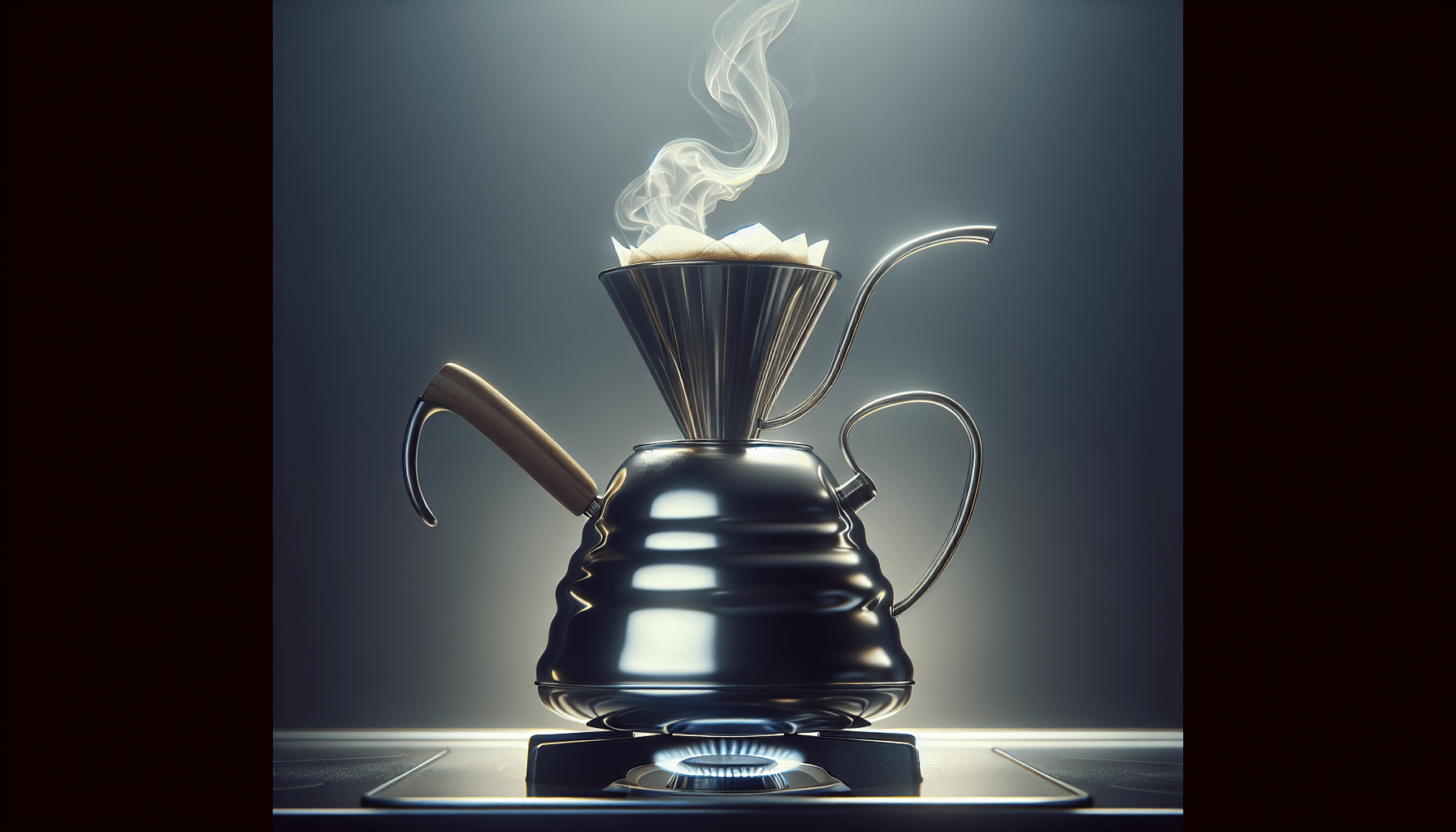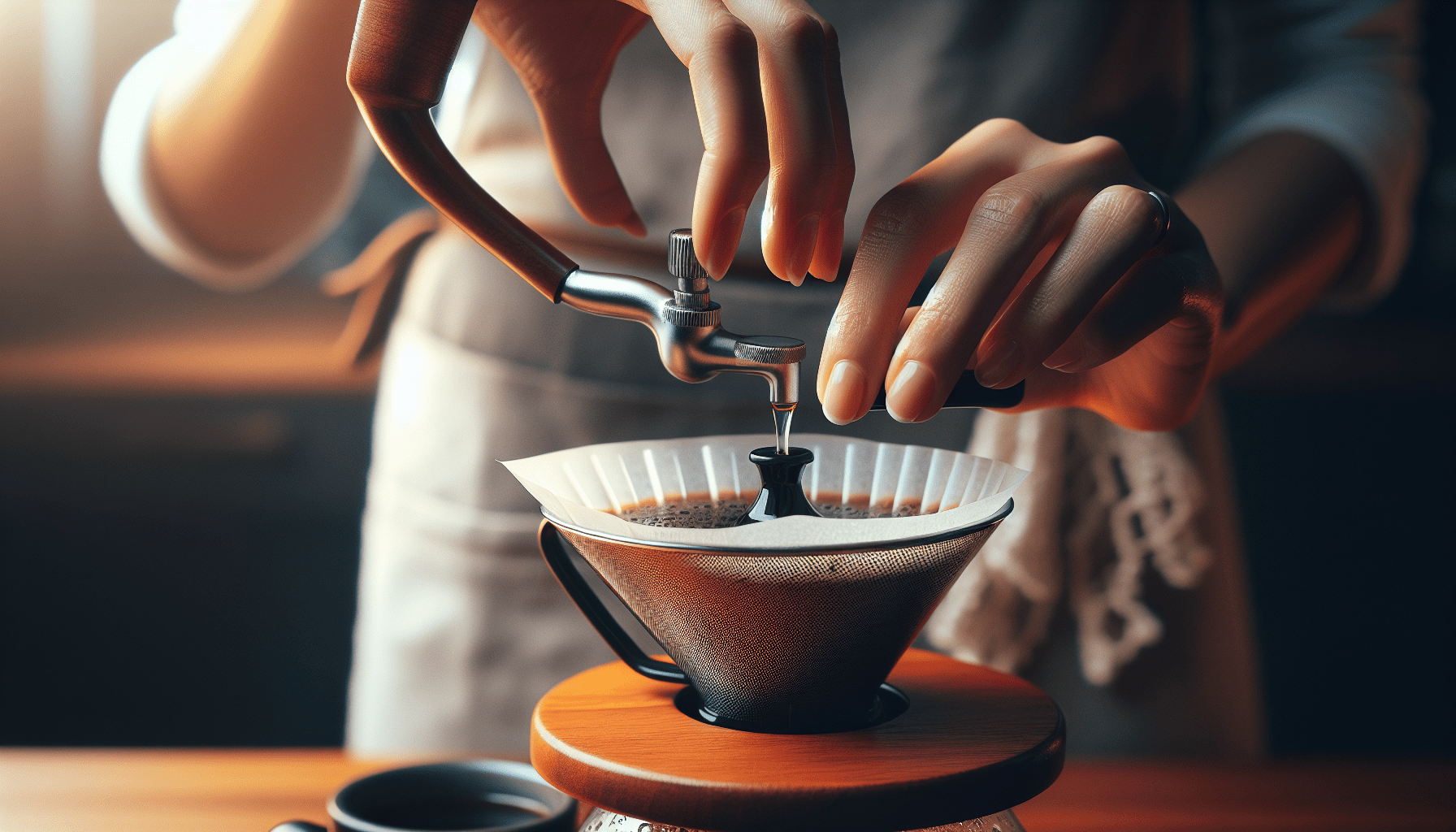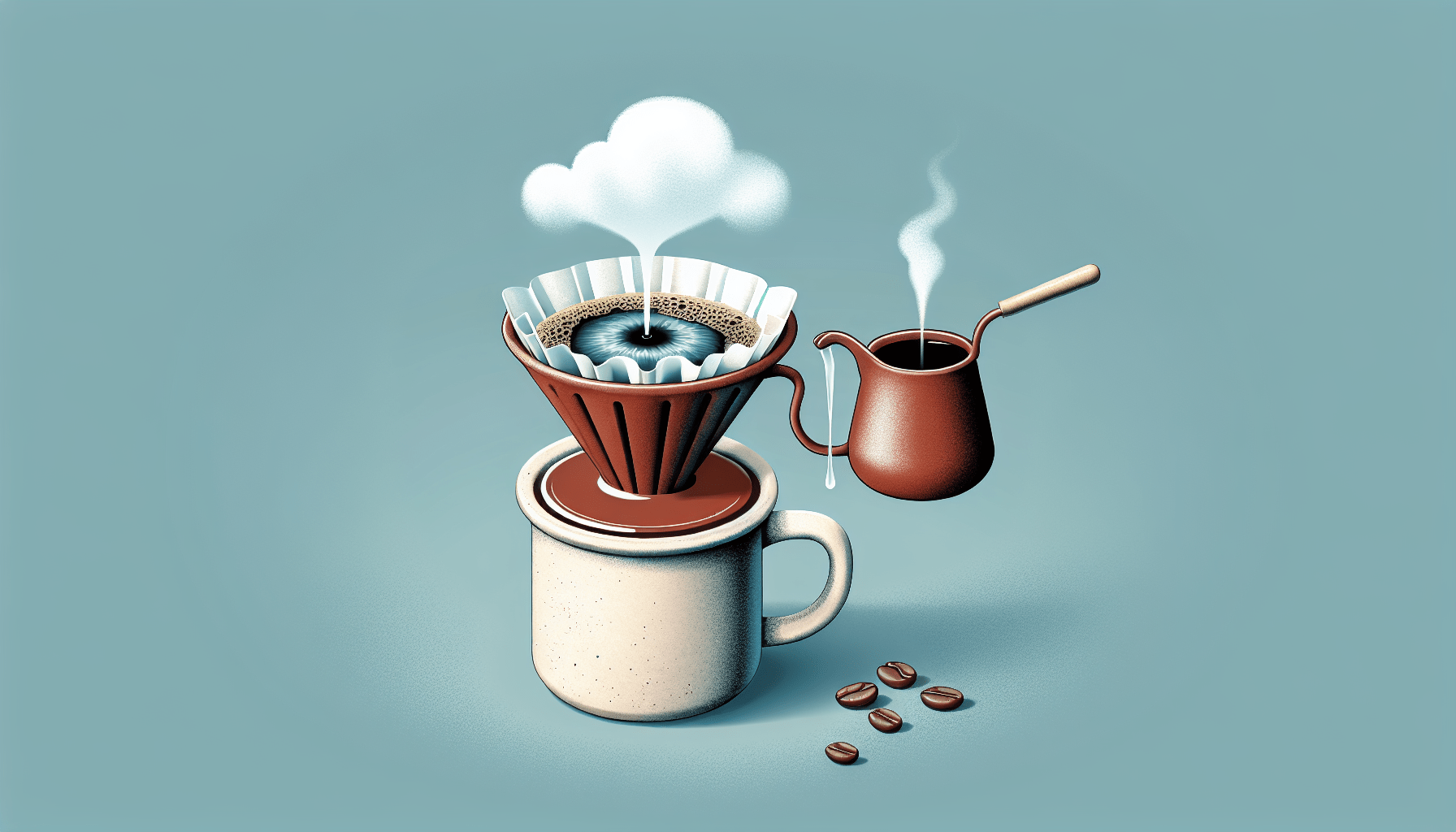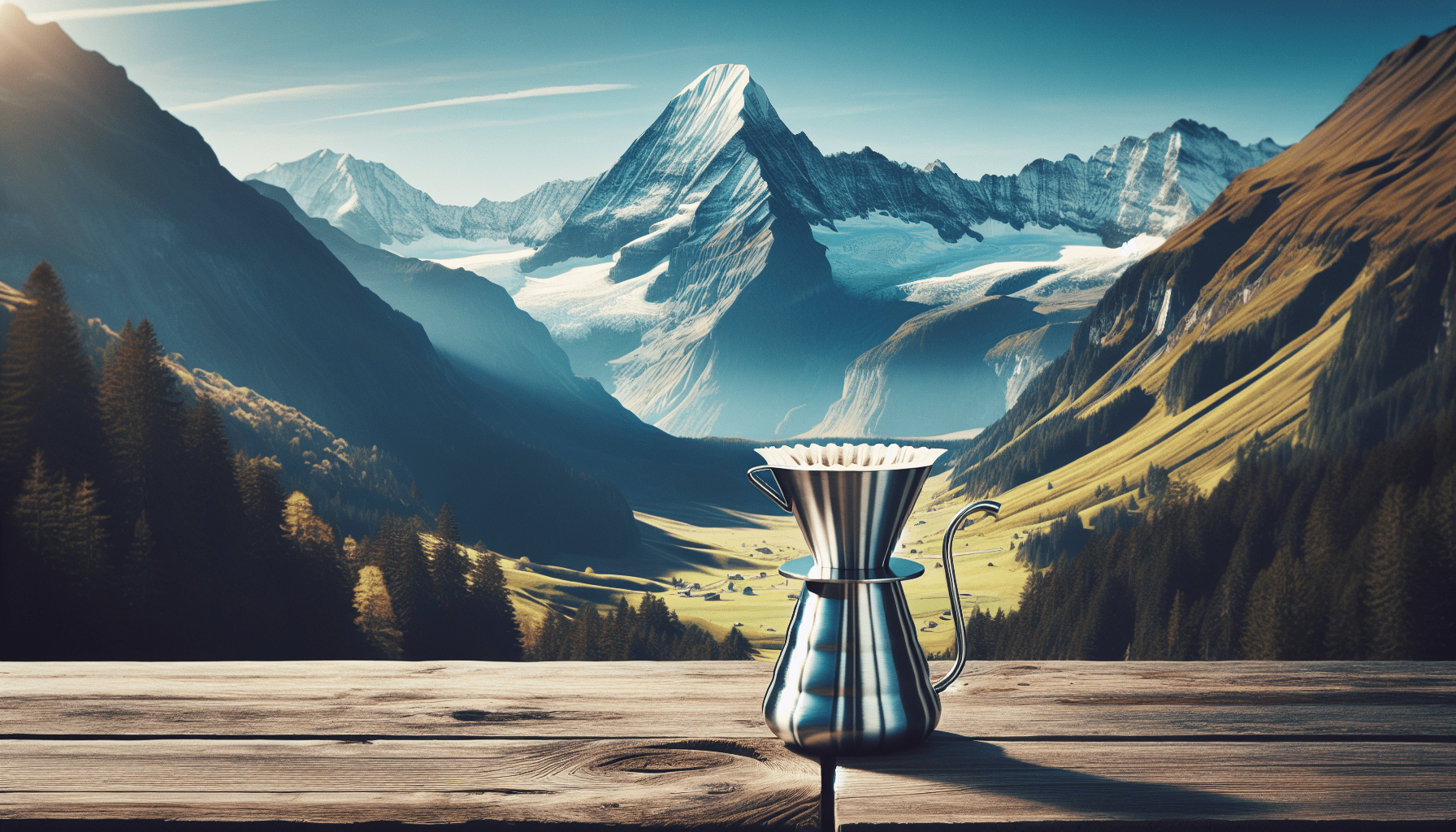Imagine you wake up to the delicious aroma of freshly brewed coffee wafting through your kitchen. As you eagerly make your way to the counter, you reach for your trusty pour-over coffee maker, ready to start your day off on the right foot. But before you begin the brewing process, a question lingers in your mind: what is the ideal water temperature for achieving that perfect cup of pour-over coffee? The answer to this seemingly simple question holds the key to unlocking a world of rich flavors and balanced brews. Join us in exploring the science behind finding the ideal water temperature for brewing coffee with a pour-over coffee maker.
Introduction
When it comes to brewing the perfect cup of coffee, the water temperature plays a crucial role. The ideal water temperature can significantly impact the flavor extraction and brewing time, resulting in a cup of joe that is either underwhelming or absolutely delicious. In this article, we will explore the importance of water temperature in coffee brewing and provide guidelines for achieving the ultimate brewing temperature. Whether you are a coffee enthusiast or a beginner, understanding the impact of water temperature will help you elevate your coffee brewing game.
Importance of water temperature
Effects on flavor extraction
The water temperature has a direct impact on the flavor extraction process during coffee brewing. If the water is too hot, it can over-extract the coffee, leading to a bitter and unpleasant taste. Conversely, if the water is too cold, it may under-extract the coffee, resulting in a weak and insipid cup. By finding the sweet spot in terms of water temperature, you can ensure that the coffee’s flavors are properly extracted, resulting in a vibrant and well-balanced brew.
Effects on brewing time
Water temperature also affects the brewing time of coffee. When water is heated to the right temperature, it enables the coffee grounds to release their flavor compounds more efficiently. This leads to a shorter brewing time, as the optimal temperature allows for a faster extraction of flavors. On the other hand, if the water is too cold, the extraction process will be slower, extending the brewing time and potentially leading to over-extraction if left brewing for too long.
Temperature range for brewing coffee
General guidelines
While personal preferences may vary, there is a generally accepted temperature range for brewing coffee with a pour-over coffee maker. The ideal range falls between 195°F and 205°F (90°C to 96°C). Within this range, the water is hot enough to facilitate proper flavor extraction without scorching the coffee or resulting in a weak brew.
Factors influencing temperature choice
Several factors influence the choice of water temperature for brewing coffee. One of the primary factors is the roast level of the coffee beans. Darker roasts generally benefit from slightly lower water temperatures, as higher temperatures can bring out more bitterness in the brew. Conversely, lighter roasts may require slightly higher temperatures to fully extract their delicate flavors. Additionally, the ambient temperature of the brewing environment can also impact the desired water temperature, as colder environments may require a slightly higher brewing temperature to compensate.
Recommended temperature for pour-over coffee
Specialty coffee recommendations
When it comes to specialty coffee, there are specific temperature recommendations from experts in the field. Many specialty coffee professionals recommend a brewing temperature between 200°F and 205°F (93°C to 96°C) for pour-over coffee. This temperature range is believed to extract the optimal flavors from the coffee grounds, resulting in a beautifully nuanced brew that showcases the coffee’s unique characteristics.
Home brewing recommendations
For home brewing, it is generally recommended to aim for a water temperature within the range of 195°F to 205°F (90°C to 96°C). This range provides a good starting point for most coffee beans and allows you to adjust based on personal preference. If you find that your coffee is consistently over-extracted or bitter, you may want to experiment with slightly lower water temperatures. On the other hand, if your coffee tastes weak or lacks flavor, you can try increasing the water temperature slightly.
How to measure water temperature
Using a thermometer
One of the most accurate ways to measure water temperature is by using a thermometer. Start by heating the water to the desired temperature and then insert the thermometer into the water to get an accurate reading. Make sure to choose a thermometer that is suitable for liquid temperatures and can provide quick and accurate readings.
Visual cues
If you don’t have a thermometer on hand, you can rely on visual cues to estimate the water temperature. As the water heats, it will go through distinct stages that can give you an indication of its temperature. For example, at around 160°F (71°C), the water will begin to produce small bubbles, known as the “fish eyes” stage. As the temperature reaches 180°F (82°C), the bubbles will increase in size and frequency, resembling a rolling boil. Finally, when the water reaches 195°F to 205°F (90°C to 96°C), it will be at or near boiling point, exhibiting a vigorous rolling boil.
Adjusting water temperature
Increasing temperature
If you find that your coffee is consistently under-extracted or lacking in flavor, you may need to increase the water temperature slightly. To do this, you can either increase the initial water temperature used for brewing or preheat your brewing equipment to retain heat during the brewing process. Remember to make gradual adjustments and taste-test your coffee to find the perfect balance.
Decreasing temperature
If your coffee tends to be bitter, overly strong, or lacks complexity, it may be due to over-extraction caused by high water temperatures. To decrease the water temperature, you can let the boiled water rest for a minute or two before starting the brewing process. Additionally, you can also consider using slightly cooler water or adjusting your brewing technique to reduce the extraction time.
Techniques for maintaining water temperature
Preheating equipment
To maintain a consistent water temperature throughout the brewing process, it is essential to preheat your brewing equipment. This can be done by rinsing your pour-over cone or coffee dripper with hot water just before brewing. By preheating the equipment, you minimize heat loss and ensure that the water temperature remains in the desired range during the entire brewing process.
Using insulated equipment
Another technique for maintaining water temperature is by using insulated equipment. Insulated coffee servers or thermal carafes can help retain the heat of the brewed coffee, preventing it from cooling down too quickly. This is particularly useful if you are brewing larger quantities of coffee or if you want to enjoy multiple cups over an extended period.
Effects of different temperature ranges
Low temperature brewing
If you intentionally brew coffee at a lower temperature, such as below 195°F (90°C), you may notice a milder and more delicate flavor profile. Although low-temperature brewing can result in a less intense cup of coffee, it allows for more subtle nuances to shine through. This can be particularly desirable for delicate and lightly roasted coffees, providing a more nuanced and tea-like experience.
High temperature brewing
On the other end of the spectrum, high-temperature brewing can result in a more robust and full-bodied cup of coffee. Brewing above 205°F (96°C) may extract more bitterness and acidity from the coffee, which can be desired for bolder and darker roasts. However, caution should be exercised, as excessive temperatures can easily lead to over-extraction and an unpleasant taste.
Experimenting with water temperature
Taste-testing different temperatures
One of the best ways to understand the impact of water temperature on coffee brewing is through taste-testing. Experiment with brewing coffee at different temperatures within the recommended range and note the differences in flavor profiles. Pay attention to the balance of acidity, sweetness, and bitterness, as well as the overall complexity and mouthfeel of the brew. Through this experimentation, you can discover your personal preferences and adjust your brewing temperature accordingly.
Noting differences in flavor profiles
As you explore different water temperatures, you will likely observe distinct flavor profiles emerging. Lower temperatures may produce lighter, fruitier, and more delicate flavors, while higher temperatures can bring out bolder, more robust, and potentially bitter notes. By noting these differences, you can tailor your brewing process to align with your taste preferences and the characteristics of the coffee beans you are using.
Conclusion
In the pursuit of the perfect cup of pour-over coffee, the water temperature is an essential element to consider. It plays a significant role in flavor extraction and brewing time, directly affecting the taste and quality of your brew. By following the recommended temperature range, measuring the water temperature accurately, adjusting when necessary, and maintaining temperature during brewing, you can unlock the full potential of your coffee beans. Through experimentation, you can refine your brewing technique and discover the water temperature that best suits your taste preferences. So, the next time you reach for your pour-over coffee maker, remember that water temperature is a friend that can help you achieve coffee excellence.




